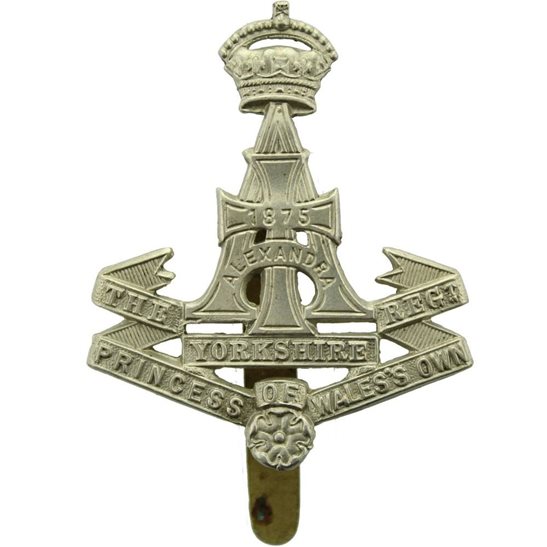Cap Badge of the "Green Howards", The Princess 
of Wales Own Yorkshire Regiment
Little is known about Charles Marsden and his connection to Melton. On 6th August 1914, he began work at St Audry’s Hospital as an attendant, but his time there was short as, on 8th September, he enlisted into the army joining the 9th (Service) Battalion of the Suffolk Regiment.
Charles and the battalion underwent training in Shoreham, Sussex, over the winter and endured a torrid time under canvas, before being posted to billets in Brighton. Once the weather had improved, they were back at Shoreham for further training, before being sent to Blackdown Camp in Aldershot. On 30th August, the battalion received its mobilisation orders and was deployed to France, arriving in Boulogne around midnight on the following day. By this time, Charles had been promoted to Serjeant and would have been in charge of a company of men. Less than a month after arriving in France, Charles and the battalion took part in the Battle of Loos – the first major battle that any of Kitchener’s army of volunteers had fought in.
During 1916, the casualty reports in the British press named Charles on two occasions as having been wounded in some way. The first occasion was in January when, in the preceding months, the 9th Suffolks had been on the front line near Poperinghe in the Ypres Salient, Belgium. The second occasion was in September, just after the battalion had been moved to the Beaumont-Hamel on the Somme.
In August 1917, Charles left the 9th Suffolks and was commissioned into the Yorkshire Regiment as a 2nd Lieutenant. He remained with this regiment until the end of the war. Charles did not return to St Audry’s Hospital and, in 1920, was living in Ecclesfield, near Sheffield, in Yorkshire.
For his war service, Charles received the 1914-15 Star and the British War and Victory Medals.
